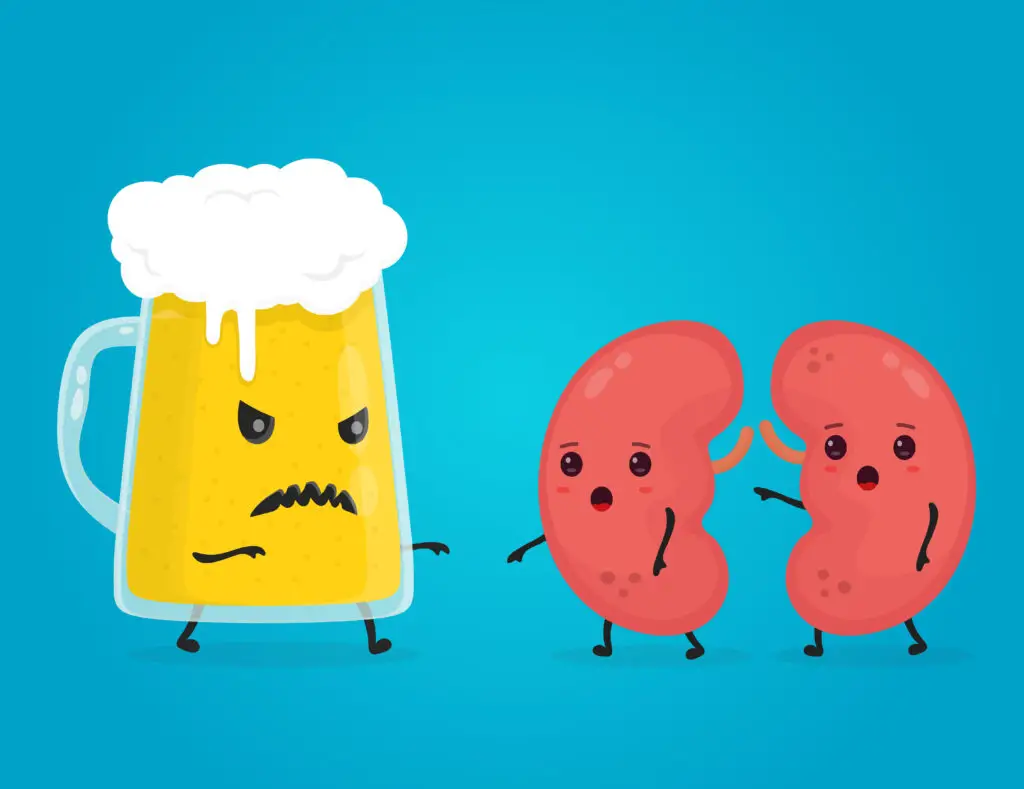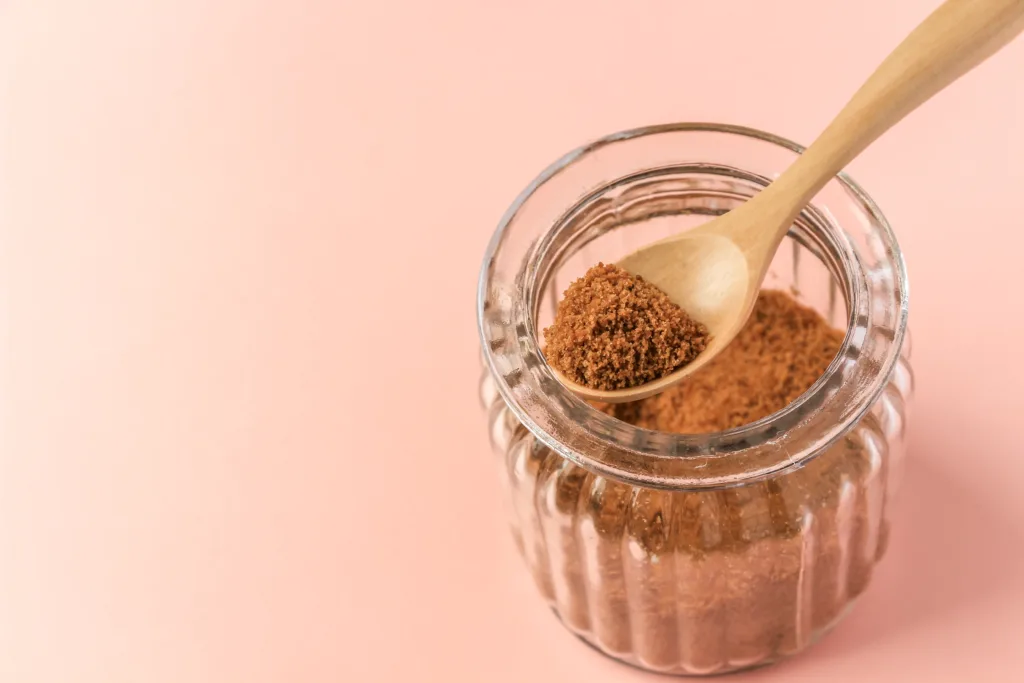Table of Contents
TRANSCRIPT
About half of the world’s population relies on rice for their everyday meal (1), and the Americans consume an average of one cup of rice daily (2, 3).
However, rice can potentially harm your kidneys owing to some of its toxic compounds (4). For example, rice contains 10 times more arsenic, a lethal heavy metal, than other grains. Worse yet, rice grown in the U.S. often contains more arsenic than other countries, and a lack of awareness can boost your arsenic intake from rice by 100 times.
But with just a simple change in how you cook rice, you can cut down arsenic levels by 73% right away. And most people don’t know that.
Besides arsenic, rice contains other poisonous compounds that can permanently stop some parts of your kidneys from doing their job. What are these harmful compounds?
In this video, we’ll reveal these compounds and give you all the tips we can find to make your rice safer. Plus, we’ll suggest the best types of rice and some healthier alternatives, so you can enjoy your rice bowl with peace of mind.
Before we dive in, please note, all the information in this video is created by real people, thoroughly fact-checked, unbiased, and reviewed by qualified professionals.
When rice becomes toxic for your kidneys
Recent studies show that rice contains a potentially harmful ingredient: arsenic (5). This toxic element has serious health implications for your kidneys (6).
Arsenic is a heavy metal, denoted by the symbol “As” in the periodic table. Like other heavy metals, arsenic is known for its mutagenic and carcinogenic potential. This means that chronic exposure to this toxic element can increase your risk of skin conditions, cancer, and damage to organs like the kidneys (7).
So, how does this deadly element actually get into your body? Let’s uncover this.
Arsenic is found in our environment in two forms (8):
- Organic arsenic: It is the least toxic form of arsenic found in the tissues of plants and animals, which makes it less harmful.
- Inorganic arsenic: This is the most toxic form of arsenic found in Earth’s crust or in groundwater (dissolved). Inorganic arsenic also occurs in food, drinking water, soil, and airborne particles due to increasing environmental pollution.
The bottom line is that organic arsenic is not as harmful as its highly toxic inorganic counterpart, which is the focus of this video.
Arsenic is present in traces in many foods. Unfortunately, scientists are discovering significant levels of inorganic arsenic in rice and rice-based products (9).
According to the Dartmouth Toxic Metals Superfund Research Program, funded by the National Institute of Environmental Health Sciences Superfund Research Program, rice consumption is the most common source of arsenic in our diet (5).
In response to public concerns, the U.S. Food and Drug Administration (FDA) has set a limit of 100 micrograms per kilogram (µg/kg) in rice products for children and infants.
If this limit is exceeded, these products are considered unsafe to eat, and the manufacturers may face regulatory actions (10).
Rice tends to accumulate more inorganic arsenic (the most toxic type) from the environment than other common grains, for reasons we’ll discuss in a minute.
According to a review published in Science of The Total Environment, rice contains 10 times more inorganic arsenic than other grains (11). This makes rice an important dietary source of this toxin, especially in regions where rice is present in almost every meal.
Before moving on, let’s take a look at the arsenic contents in some common grains.
On average, rice grown in a typical environment contains approximately 100 to 200 µg/kg of inorganic arsenic (12, 13). In contrast, other grains grown in similar conditions have much lower levels. For instance, barley contains 30 µg/kg, wheat has 20 µg/kg, and oats contain 10 µg/kg (14). Grains such as maize, quinoa, sorghum, and millet have even lower levels, with amounts below 10 µg/kg (15, 16).
This raises the question: Why are the levels of arsenic higher in rice?
The answer to this question lies primarily in its growing conditions. Rice is grown in flooded fields where arsenic tends to accumulate as it seeps from soil or irrigation water contaminated with arsenic-based pesticides, mining, smelting, and industrial waste (17, 18).
Secondly, the waterlogged fields create a low-oxygen environment that increases arsenic availability in soil, allowing rice plants to absorb it in greater amounts (19).
Yet another concern is household use of arsenic-polluted water for washing and cooking rice. Rice grains tend to absorb arsenic from water during soaking and boiling, increasing the risk of arsenic in the rice you consume (20).
Arsenic contamination poses a serious global health concern (21). Consuming arsenic through drinking water and rice can damage the kidneys, which are vital for removing toxins from your body (6, 20, 22). That’s why it is crucial to understand the risks associated with arsenic, as that will empower you to make informed choices.
Now, let’s talk about how this lethal element affects your kidney health.
Arsenic toxicity can be acute or chronic. Acute kidney injuries occur rapidly after exposure to a single large dose of arsenic. This typically requires immediate medical interventions to prevent lasting damage or fatality.
Normally, with prompt and effective treatment, kidney cells can heal and regain their functions (23). On the other hand, chronic exposure to low doses of arsenic repeatedly harms kidney cells, leading to the development of chronic kidney disease (CKD).
CKD is an irreversible condition with no current cure. This subtle type of toxicity builds up gradually over time with continuous exposure (22, 24). It’s just like slow poisoning.
This video will focus more on long-term arsenic toxicity, which often results from consuming foods that contain inorganic arsenic, like rice.
To understand how arsenic affects your kidneys, let’s first take a look at how your kidneys function.
Each kidney has about one million nephrons, each featuring a complex structure called a glomerulus.
The glomerulus works like a complex kitchen strainer, removing waste and excess water while keeping vital proteins and blood cells. The filtered fluid then moves through the kidney tubules, which return nutrients and small proteins to the bloodstream and eliminate waste into the urine (25, 26).
When you swallow low levels of arsenic from rice, your healthy kidneys can effectively remove it from your body. Here is a simple explanation of how this complicated process works.
When you digest arsenic, it readily enters your bloodstream along with nutrients. Once arsenic reaches your cells, it is quickly turned into a less harmful state using glutathione, a natural antioxidant (26, 27). In the next step, the liver adds a “safety tag” to the arsenic, ensuring it gets excreted from the body without causing any damage. This tagged arsenic then travels to the kidneys, where it is filtered and sent out of the body through urine (6, 27).
Let’s consider the other scenario in which the kidneys are regularly exposed to arsenic because of eating arsenic-contaminated rice often.
Research in mice has shown that the persistent intake of arsenic from rice, even in small amounts, gradually deteriorates kidney health over time (28).
When the body can’t remove all inorganic arsenic the excess travels through the body without a safety tag. As a result, this toxic element damages soft tissues and tends to accumulate in the kidneys, leading to different forms of kidney dysfunction (29).
For instance, arsenic accumulation in kidney cells causes oxidative stress, a key indicator of toxicity. When arsenic builds up in the cells, it uses up your body’s stores of glutathione, a natural antioxidant that helps neutralize harmful unstable molecules (free radicals) that damage cells (26).
The excess free radicals trigger inflammation, cell death, and permanent damage in kidney tissues (25, 30).
After causing damage through oxidative stress, arsenic reaches the glomeruli and destroys their delicate structures. This leads to the permanent loss of the kidney’s ability to filter waste and balance electrolytes, resulting in chronic kidney disease (29, 31).
Arsenic also harms the kidney tubule cells, where nutrients and proteins are reabsorbed. This damage causes electrolyte imbalances, loss of proteins in the urine, and more toxin buildup in the body (25, 32).
At its worst, this situation is far more critical for individuals with preexisting kidney conditions. Damaged kidneys are less efficient at filtering arsenic, leading to quicker buildup and more toxicity.
This can worsen kidney damage and potentially cause kidney failure, requiring dialysis or a kidney transplant for survival (23, 32).
According to a study published in Ecotoxicology and Environmental Safety in 2020, a group of researchers exposed mice to arsenic in rice for sixteen weeks (28). They found that arsenic accumulation harmed the mice kidneys by increasing the free radicals that damaged kidney cells. This confirms the harmful effects of arsenic on kidney health and highlights the potential risks of consuming arsenic-contaminated rice (28).
Beyond kidney health, arsenic poses other significant health risks. Long-term consumption of arsenic-contaminated food is linked to a higher risk of skin, bladder and lung cancers, cardiovascular diseases, nerve damage, and developmental issues in children (7, 21, 33). This makes monitoring and regulating arsenic levels in food important, particularly in rice.
Determining which types of rice are arsenic-free or contaminated can be challenging, but don’t worry! We’re here to provide you with essential information on this journey.
In the next section, you will learn about the arsenic levels in different types of rice, tips to reduce toxins, and healthier options, helping you make safer food choices.
Now, let’s explore which types of rice have the lowest arsenic levels and how to choose the best options to avoid potential health risks.
Arsenic content in different types of rice
According to the USA Rice Federation, approximately 120,000 rice varieties are grown worldwide (34). Arsenic levels in rice vary greatly—by 3 to 34 times—depending on the type and where it’s grown (35).
U.S. Rice vs. Asian Rice
Interestingly, studies found that rice grown in the United States often contains higher amounts of arsenic than other regions (12, 36, 37). More specifically, rice cultivated in certain Southern states, including Arkansas, Louisiana, and Texas—collectively known as the Ark-La-Tex region—show elevated arsenic content.
A study published in Environmental Science and Technology examined 204 rice commercial samples from New York stores and found that rice from the Ark-La-Tex region (47 percent of the U.S. market) had the highest arsenic levels, ranging from 190 to 258 µg/kg. Rice from California had lower arsenic at 133 µg/kg, and rice from Asia had the lowest at 70 µg/kg (12).
So, what makes American rice more risky than Asian rice?
Historically, farmers from southern cotton farming belts heavily used arsenic-based pesticides, leaving residual arsenic in the soil and water. This legacy, combined with the natural high arsenic geology and industrial pollution in these areas, makes rice paddies more likely to absorb arsenic (38).
Although the United States produces enough rice to satisfy half of its population, it remains the largest rice-importing country in the Western Hemisphere. In fact, it imports around 1.3 million tons annually (39). Most of this originates from Asia, which generally has lower arsenic levels.
However, not all Asian rice contains lower levels of arsenic. This issue significantly varies from one place to another.
For instance, rice grown in Bangladesh, Sri Lanka, and China often has elevated arsenic levels because the groundwater used for irrigation in these regions is naturally high in arsenic (40, 41, 42).
On the other hand, both the United States and Europe value rice from Pakistan and India for its safety and aromatic qualities. Basmati and jasmine rice, commonly grown in these regions, are known for their low arsenic levels (43, 44).
Brown Rice vs. White Rice
When buying rice at the grocery store, many people focus on whether it’s brown or white rice, rather than where it comes from.
Brown rice is considered more beneficial and preferred over white rice because of its higher fiber content, richer nutrient profile, and lower glycemic index (45).
It also retains the highest concentrations of inorganic arsenic in the outer bran layers (46). Here’s the interesting twist: The arsenic content within brown rice increases as the grain size gets smaller, which suggests that brown rice with larger grains may be a better choice (47).
However, when brown rice is polished to produce white rice, the arsenic-containing bran and other outer layers are removed. As a result, white rice typically has a lower arsenic content. This is why white rice is considered a safer option for reducing the risk of arsenic exposure (46).
More specifically, an FDA report from 2016 revealed that a typical variety of brown rice contains 154 µg/kg of arsenic, while its white rice counterpart has only 92 µg/kg (48). The bottom line is that brown rice contains an average of 50 percent more inorganic arsenic than white rice of the same variety (5).
Other toxic compounds in rice
Rice can also affect kidney health due to its high levels of phytates and amylopectin.
Phytate, or phytic acid, is an antinutrient found in rice. This means it can reduce your body’s ability to absorb minerals, which could lead to deficiencies over time (49).
According to a study published in 2020, consuming too many phytates, along with low calcium, can damage the tubular cells of the kidneys, leading to crystal deposition in the kidneys. It can also result in bone loss due to phosphate and calcium wasting through the urine (50).
Amylopectin, on the other hand, is a type of starch in rice that is rapidly digested, causing quick spikes in blood sugar levels. This rapid rise in blood sugar may contribute to insulin resistance and diabetes — risk factors for kidney disease (51, 52).
Long grain rice varieties (e.g., basmati and jasmine) contain the least amount of amylopectin, whereas short grain rice (like arborio, paella-style, and Italian) and sticky rice (including glutinous or waxy type) have the highest amount of amylopectin (53).
While rice is common in many diets, it’s important to consider these factors, especially if you are concerned about kidney health.
Now, stick around as we explore how to enjoy your rice bowl while keeping these concerns in check!
Reducing toxic compounds in rice
No matter how toxic rice can be, it is still everywhere, easy to digest, and simple to cook, making it a popular staple for many.
In 2023, the Food and Agriculture Organization (FAO) reported that the global population consumed approximately 520 million metric tons of rice (54). If you split up this figure, you will learn that each person on the planet consumes roughly 54 kilograms of rice within a year (55).
According to the US Department of Agriculture, Americans consume an average of 33 pounds (15 kilograms) of rice per person within a year. In other words, that is approximately 1 cup of cooked rice every day (3, 56).
The significance of rice in our daily diet lies in its nutrition, health, and recovery uses. For instance, rice is gluten-free and recommended for people with celiac disease and gluten intolerance.
Because of its low fiber content, white rice is a good choice for people with inflammatory bowel disease (IBS) following low-residue diets and it helps recovery after a bout of diarrhea. It is also among the first solid foods introduced to babies because it has a mild taste and is less likely to cause allergies (3).
If you really need rice or love it too much to give it up, here are some ways to keep enjoying it while reducing the risk of toxic compounds.
Shopping Tips
The joint consultation of the FAO and WHO set the tolerable intake level for arsenic exposure at 3.0 µg/kg per day or 21 µg/kg per week (57). This means an average person weighing almost 150 pounds (68 kg) can tolerate up to 204 µg of daily arsenic exposure from the environment. Going over this amount leads to serious health risks.
Here’s a surprising fact: Arsenic levels in rice grains can vary widely, from 0.3 to 2,600 µg/kg, often exceeding the limits set by both the FAO (100 µg/kg) and the Codex Alimentarius Commission (200 µg/kg) (58).
These findings reveal that a lack of awareness can boost your arsenic exposure from rice by 100 times, highlighting the critical need to stay informed about what you eat.
The good news is that there are several ways to enjoy rice while reducing your exposure to arsenic and other harmful compounds.
The Dartmouth Research Program’s website provides valuable information on choosing rice and rice products with lower arsenic levels (5).
Whenever possible, go for rice types with lower arsenic levels. Choosing white rice over brown rice can cut your arsenic exposure by 50 percent (5). To maintain the nutritional benefits, blend equal amounts of white and brown rice in your meals. This way, you can minimize arsenic intake by 25 percent while still getting fiber and minerals from brown rice (48).
Check for the origin of rice while grocery shopping. It’s a common myth that Asian rice is safe, but not all varieties are risk-free. Safer option is basmati and jasmine rice from the Himalayan region, including North Pakistan, North India, and Nepal (59). Sushi rice grown in the United States is also great as these varieties usually contain minimal amounts of arsenic (5, 43, 44).
Look at the labels of your favorite snacks to check if they include ingredients like rice, rice flour, or rice syrup. If they do, replace them with alternative snacks to minimize your arsenic exposure (5).
Cooking Tips
You can reduce the levels of arsenic and phytates in rice by simply washing and cooking it with clean, arsenic-free water, such as bottled water, filtered water, or water from a safe municipal supply. This has been shown to lower arsenic content by 57 percent in both white and brown rice (60).
According to the Dartmouth Research Institute, cook your rice like pasta. Here’s how it works: Start by boiling rice in six times more water, cook until it’s soft, then strain and rinse with fresh water (5).
This approach reduces inorganic arsenic by 40 to 60 percent, depending on the type of rice. However, it also drains out iron, folate, thiamin, and niacin by 50 to 70 percent from enriched rice (48, 61).
Recently, the University of Sheffield unveiled a new home-friendly cooking method for rice that reduces most of the arsenic while retaining the essential nutrients. The process begins with parboiling the rice in preheated water for five minutes.
After draining and replacing the water, cook the rice over a low flame until it absorbs all the water. This method removes inorganic arsenic levels by 73 percent in white rice and 54 percent in brown rice while it also lowers the amylopectin content in both types (62).
Keep in mind that if you use arsenic-contaminated water for cooking, it could actually increase the arsenic levels in the rice. For this reason, avoid using water that exceeds 10 ug/L in arsenic content (63, 64).
Is Organic Rice Arsenic-Free?
Due to the widespread influence of commercial ads, many people mistakenly believe that organic rice is completely safe to eat. While organic rice is generally better, no one guarantees it’s arsenic-free.
As mentioned earlier, arsenic is absorbed into the rice grain during the plant’s growth, which entirely depends on the soil geology and irrigated water. So, always verify the origin and how the rice is tested for safety (65).
The bottom line is to keep a balance. Instead of cutting rice entirely from your diet, just be aware of the potential arsenic intake from rice and other sources. If you eat rice with every meal, then reduce your bowl portions and diversify your meals to lessen arsenic exposure (66).
So, next time when you prepare rice, consider these tips to make it safer and healthier to eat.
How Much Rice Is Too Much?
Before moving forward, let’s tackle a question that might be on your mind: How much rice is too much for you?
Well, in the past, rice consumption patterns typically revolved around personal preferences and individual health considerations. But, things have changed.
Given the health risks and public concerns about arsenic exposure, Consumer Reports established new rice consumption guidelines many people don’t know about.
According to their report, you can safely eat up to 4.5 servings per week of U.S. sushi rice or basmati rice sourced from Pakistan, India, or California.
For other types of rice, they suggest limiting intake to two servings per week for adults and 1.25 servings per week for children. A serving size of rice contains around one-quarter cup (45 grams) of uncooked rice (66).
Alternatives
If you’re someone who eats a lot of rice and rice products, there’s a way to lower your arsenic exposure. It involves cutting back on those foods and adding other gluten-free grains into your meals.
Alternatives to rice that are low in arsenic yet still gluten-free include quinoa, millet, amaranth, buckwheat, corn, oats, flax, and teff. These grains offer optimal nutrition with insignificant arsenic exposure (67).
Other dietary sources of arsenic you should be mindful of include:
- Rice-based products, such as rice cereals, rice cakes, and rice milk
- Seafoods, particularly shellfish and Hijiki seaweed (68)
- Poultry, which has arsenic residues from feed additives
- Processed fruit juices, including apple, pear, and grape juice (69)
- Some vegetables, particularly those grown in arsenic-rich soils, such as leafy greens and root vegetables (69)
All these dietary suggestions are designed to minimize chronic arsenic exposure, which could be detrimental to your kidneys and overall health.
Another concern: Can rice cause cancer?
Can rice cause cancer? This question has recently stirred up a lot of concern, and people are increasingly anxious. Let’s break this down and get to the facts briefly.
Yes, it’s true! There is evidence for the claim that your favorite rice can increase cancer risk (70, 71, 72). According to research published in the Science of The Total Environment, large rice intake can significantly raise cancer risk because of its arsenic-harboring nature (72).
The FDA’s report shows that eating rice over a lifetime could increase the risk of lung and bladder cancer, possibly affecting 39 out of every 1 million people (48).
In addition, increasing daily rice consumption from less than one serving to one serving could raise cancer cases to between 74 and 184 per 1 million people (48). What’s even more concerning is that the average American diet already includes one serving of rice or rice products daily (3, 56).
Reducing exposure to inorganic arsenic by limiting rice intake would decrease lifetime cancer risk. Setting a limit on inorganic arsenic exposure of up to 100 µg/kg through rice and rice products lowers cancer risk by 2 to 47 percent. On the other hand, reducing it up to 75 µg/kg decreases this risk by 17 to 79 percent, depending on the type of rice (48).
To wrap this up, being mindful of your rice consumption and setting limits on arsenic exposure from rice and rice products can greatly reduce your risk of cancer. These are practical steps toward safeguarding your health through smart dietary choices.
Summary
Rice, a dietary staple for millions worldwide, harbors a hidden danger: arsenic. Chronic exposure to the inorganic form of arsenic can seriously harm kidney health, potentially leading to kidney disease.
Rice absorbs this toxin readily from the environment, making it a major dietary source of arsenic. To minimize arsenic exposure, choose rice types with lower arsenic levels like white over brown rice, and use special cooking techniques. These strategies can reduce arsenic intake by up to 50 percent.
Knowing the potential health risks of eating rice is crucial because rice is such common food. By making informed choices and diversifying grains, you can protect your kidney health from the harmful effects of arsenic in rice.
Sources
- Rice: Importance for Global Nutrition. 2019. Journal of Nutritional Science and Vitaminology.
- Rice consumption worldwide in 2023/2024, by country. 2024. Statista website.
- Rice intake and emerging concerns on arsenic in rice: a review of the human evidence and methodologic challenges. 2019. Current Environmental Health Reports.
- Determination of arsenicals in mouse tissues after simulated exposure to arsenic from rice for sixteen weeks and the effects on histopathological features. 2020. Ecotoxicology and Environmental Safety.
- Arsenic in Rice and Rice Products. 2024. Dartmouth Toxic Metals Superfund Research Program.
- Arsenic and chronic kidney disease: a systematic review. 2014. Current Environmental Health Reports.
- Arsenic in brown rice: do the benefits outweigh the risks? 2023. Frontiers in Nutrition.
- Characterization and Quantification of Arsenic Species in Foodstuffs of Plant Origin by HPLC/ICP-MS. 2023. Life.
- Inorganic arsenic in rice and rice-based diets: Health risk assessment. 2017. Food Control.
- Arsenic in Food. 2024. U.S. Food & Drug Administration.
- Assessment of human dietary exposure to arsenic through rice. 2017. Science of The Total Environment.
- Arsenic in Rice: I. Estimating Normal Levels of Total Arsenic in Rice Grain. 2008. Environmental Science & Technology.
- Geographical variation of arsenic distribution in paddy soil, rice and rice-based products: A meta-analytic approach and implications to human health. 2019. Journal of Environmental Management.
- Greatly Enhanced Arsenic Shoot Assimilation in Rice Leads to Elevated Grain Levels Compared to Wheat and Barley. 2007. Environmental Science & Technology.
- Determination of Arsenic in Minor Cereals (Barley, Foxtail Millet, Proso-Millet, Finger-Millet, Pearl-Millet, Buckwheat, Oat, Quinoa and Sorghum) in Gazipur, Bangladesh. 2021. Journal of Natural Products and Natural Products Synthesis.
- Inorganic arsenic and trace elements in Ghanaian grain staples. 2011. Environmental Pollution.
- Arsenic pollution cycle, toxicity and sustainable remediation technologies: A comprehensive review and bibliometric analysis. 2024. Journal of Environmental Management.
- Phosphate fertilizer is a main source of arsenic in areas affected with chronic kidney disease of unknown etiology in Sri Lanka. 2015. Springer Plus.
- Arsenic release from flooded paddy soils is influenced by speciation, Eh, pH, and iron dissolution. 2011. Chemosphere.
- Arsenic Bioaccessibility in Cooked Rice as Affected by Arsenic in Cooking Water. 2012. Journal of Food Science.
- A global health problem caused by arsenic from natural sources. 2023. Chemosphere.
- Drinking water heavy metal toxicity and chronic kidney diseases: a systematic review. 2020. Reviews on Environmental Health.
- Study: Even Low Levels of Arsenic Can Cause Kidney Disease. 2018. Texas Tech Today.
- Mechanism for arsenic-induced toxic effects: In Handbook of Arsenic Toxicology (Second Edition). 2023. Academic Press.
- Physiology, Renal. 2023. StatPearls Publishing LLC.
- Arsenic-mediated nephrotoxicity. 2015. Renal Failure.
- What is the Biologic Fate of Arsenic in the Body?. 2023. Agency for Toxic Substances and Disease Registry.
- Determination of arsenicals in mouse tissues after simulated exposure to arsenic from rice for sixteen weeks and the effects on histopathological features. 2020. Ecotoxicology and Environmental Safety.
- What are the Physiologic Effects of Arsenic Exposure?. 2023. Agency for Toxic Substances and Disease Registry.
- Nephroprotective effects of chlorogenic acid against sodium arsenite-induced oxidative stress, inflammation, and apoptosis. 2020. Journal of the Science of Food and Agriculture.
- Toxicity of inorganic arsenic to animals and its treatment strategies. 2023. Comparative Biochemistry and Physiology Part C: Toxicology & Pharmacology.
- Arsenic Exposure through Dietary Intake and Associated Health Hazards in the Middle East. 2022. Nutrients.
- Prenatal arsenic exposure, arsenic metabolism and neurocognitive development of 2-year-old children in low-arsenic areas. 2023. Environment International.
- Rice Types & Forms. 2020. USA Rice website.
- Variation in grain arsenic assessed in a diverse panel of rice (Oryza sativa) grown in multiple sites. 2012. New Phytologist.
- Heavy metal exposure from ingesting rice and its related potential hazardous health risks to humans. 2015. Environmental Science and Pollution Research.
- Global Sourcing of Low-Inorganic Arsenic Rice Grain. 2020. Exposure and Health.
- Slow-Release Arsenic. 2024. ReVista Harvard Review of Latin America website.
- Rice Trade. 2023. Economic Research Service USDA.
- Arsenic in the water and agricultural crop production system: Bangladesh perspectives. 2022. Environmental Science and Pollution Research.
- A Critical Review of Arsenic Contamination in Sri Lankan Foods. 2019. Journal of Food Quality and Hazards Control.
- Distribution, bioavailability, and human health risk assessment of arsenic in groundwater-soil-rice system in the Jianghan Plain, Central China. 2022. Environmental Science and Pollution Research.
- Soil arsenic but not rice arsenic increasing with arsenic in irrigation water in the Punjab plains of Pakistan. 2020. Plant and Soil.
- Dietary exposure to total and inorganic arsenic via rice and rice-based products consumption. 2020. Food and Chemical Toxicology.
- Value of Wholegrain Rice in a Healthy Human Nutrition. 2021. Agriculture.
- High exposure to inorganic arsenic by food: the need for risk reduction. 2015. Archives of Toxicology.
- Consumption of Brown Rice: A Potential Pathway for Arsenic Exposure in Rural Bengal. 2012. Environmental Science and Technology.
- Arsenic in Rice and Rice Products Risk Assessment Report. 2016. U.S. Food and Drug Administration website.
- Investigation of the medicinal significance of phytic acid as an indispensable anti-nutrient in diseases. 2019. Clinical Nutrition Experimental.
- High-phytate/low-calcium diet is a risk factor for crystal nephropathies, renal phosphate wasting, and bone loss. 2020. eLife Sciences.
- This rapid rise in blood sugar may contribute to insulin resistance and diabetes, both of which are risk factors for kidney disease. 2016. American journal of Physiology.
- Resistant Starch as a Dietary Intervention to Limit the Progression of Diabetic Kidney Disease. 2022. Nutrients.
- Ratio of Amylose and Amylopectin as indicators of glycaemic index and in vitro enzymatic hydrolysis of starches of long, medium and short grain rice. 2017. International Journal of Research in Medical Sciences.
- Total rice consumption worldwide from 2008/2009 to 2023/2024. 2024. Statista website.
- Rice for Food Security: Revisiting Its Production, Diversity, Rice Milling Process and Nutrient Content. 2022. Agriculture.
- Grain: World Markets and Trade. 2024. United States Department of Agriculture.
- Exposure to Arsenic: A Major Public Health Concern. 2019. World Health Organization.
- Variety-specific arsenic accumulation in 44 different rice cultivars (O. sativa L.) and human health risks due to co-exposure of arsenic-contaminated rice and drinking water. 2021. Journal of Hazardous Materials.
- Recent advances in arsenic accumulation and metabolism in rice. 2010. Molecular Breeding.
- Arsenic burden of cooked rice: Traditional and modern methods. 2006. Food and Chemical Toxicology.
- Cooking rice in a high water to rice ratio reduces inorganic arsenic content. 2009. Journal of Environmental Monitoring.
- Improved rice cooking approach to maximise arsenic removal while preserving nutrient elements. 2021. Science of The Total Environment.
- Arsenic retention in cooked rice: Effects of rice type, cooking water, and indigenous cooking methods in West Bengal, India. 2019. Science of Total Environment.
- Drinking Water Requirements for States and Public Water Systems. 2023. United States Environmental Protection Agency.
- Arsenic speciation in Brazilian rice grains organically and traditionally cultivated: Is there any difference in arsenic content?. 2016. Food Research International.
- Analysis of Arsenic in Rice and Other Grains. 2014. Consumer Reports.
- Arsenic and Gluten-Free Diets. 2024. Dartmouth Toxic Metals Superfund Research Program.
- Arsenic in Seafood and Seaweed. 2024. Dartmouth Toxic Metals Superfund Research Program.
- Arsenic in Fruits, Juices, and Vegetables. 2024. Dartmouth Toxic Metals Superfund Research Program.
- Mechanisms Underlying Latent Disease Risk Associated with Early-Life Arsenic Exposure: Current Research Trends and Scientific Gaps. 2015. Environmental Health Perspectives.
- Rice Intake and Emerging Concerns on Arsenic in Rice: A Review of the Human Evidence and Methodologic Challenges. 2019. Current Environmental Health Reports.
- Rice genotype’s responses to arsenic stress and cancer risk: The effects of integrated birnessite-modified rice hull biochar-water management applications. 2021. Science of The Total Environment.

















Comments
0